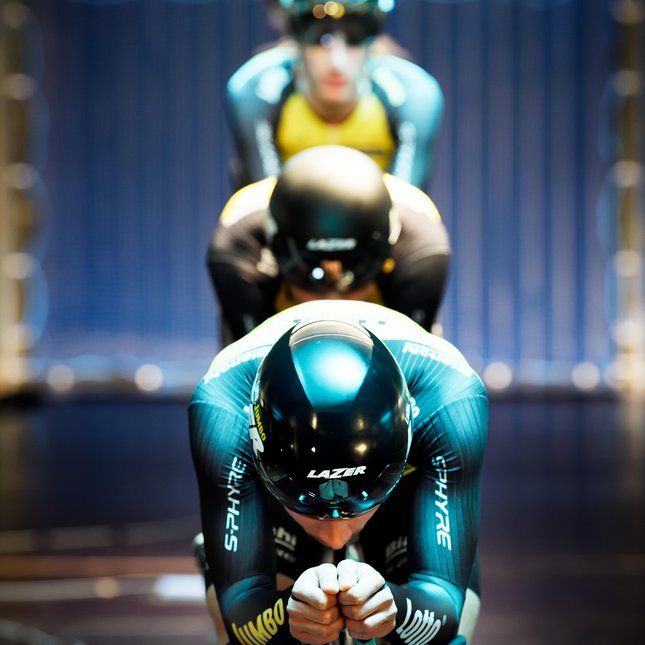Atmospheric Boundary Layer Wind Tunnel
The wind tunnel (WT) on campus of Eindhoven University of Technology (TU/e) facilitates aerodynamic and boundary layer research on static and moving objects. The WT is a closed-circuit atmospheric boundary layer wind tunnel (ABLWT) with a total length of 46 m and a test section length of 27 m. The test section is 3 m wide and 2 m high. Tests can be conducted at reference velocities ranging from 0 - 30 m/s.

Research fields
Environmental experimental research is required to understand and improve e.g., pedestrian level wind comfort, the distribution of particulate matter through a city, wind loads caused by large ships in harbours, natural ventilation potential, or cycling aerodynamics. Some of these experiments require an experimental setup at reduced geometric scaling ratios, others need an analysis of the real-size object. Both cases can be realized and assessed in the ABLWT under highly controlled boundary conditions. The turbulence level at the exit of the contraction is less than 1%. Low-turbulent measurements are therefore performed in the front part of the test section (near the contraction), while high-turbulent (atmospheric) measurements are performed towards the rear of the test section. Therefore, the wind tunnel is instrumented with two high-accuracy turning tables of 2.5 m in diameter.
Atmospheric boundary layer setup
The long test section of this facility allows the reproduction of neutral ABL winds, representing flow characteristics that develop as a result of different terrain categories in accordance with the International Standard Codes in Civil Engineering. For this purpose, L-shaped metal squared elements of different sizes (0.02 m – 0.08 m) and vortex generators (i.e., spires) are combined in order to generate ABL flows at different geometric scaling ratios ranging from about 1/40 to 1/400.
Low-turbulent setup
The WT can also accommodate aerodynamic research on moving objects, such as cyclists, skaters or vehicles. If required, the roof and walls of the first nine meters of the test-section can be removed and replaced by an hydraulically operated horizontal platform to facilitate experimental tests of larger obstacles. In addition, two turbulent grids are available to assess the effect of different turbulence levels on the object under investigation.
Operation and usage
A small but experienced team of WT experts conducts experiments for TU/e research groups. Notwithstanding, the facility is also available for commercial purposes. Parties wishing to have buildings, ships, athletes or other objects tested for e.g., an assessment of wind loads and/or improved aerodynamics should contact Dr. Stefanie Gillmeier.
Visit our other state-of-the-art labs and facilities
Contact us
-
Dr. Stefanie Gillmeier